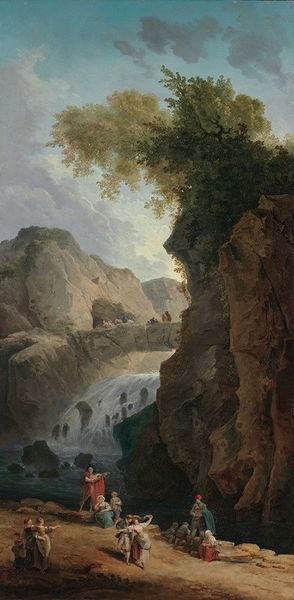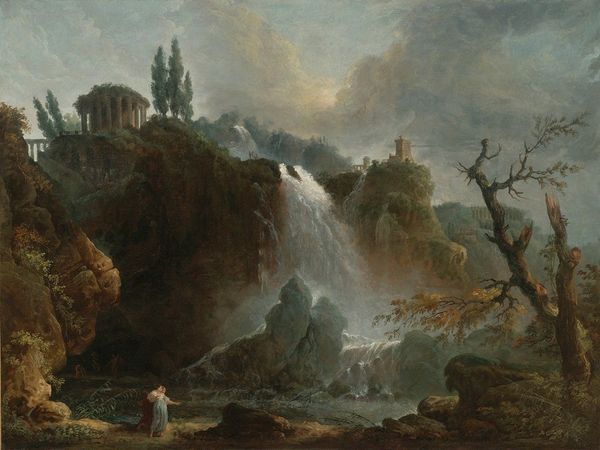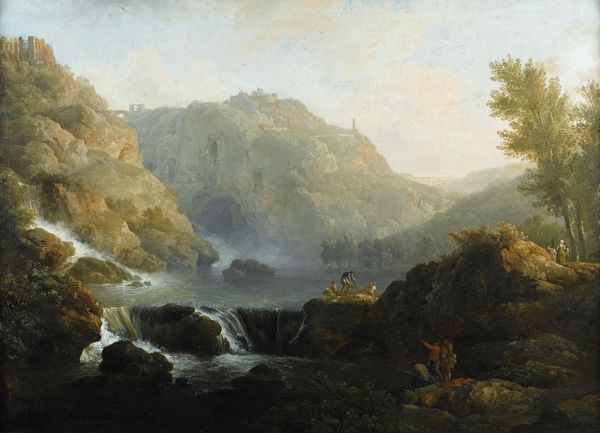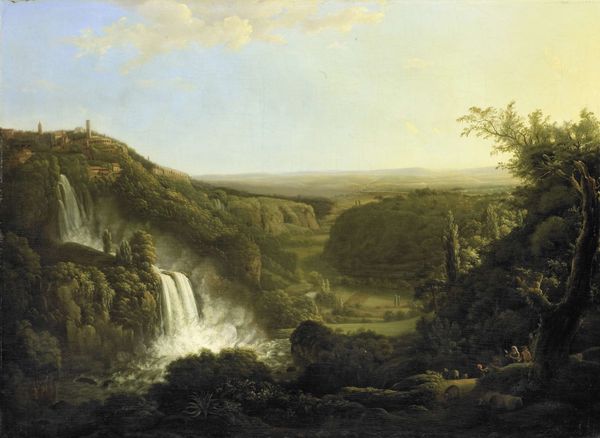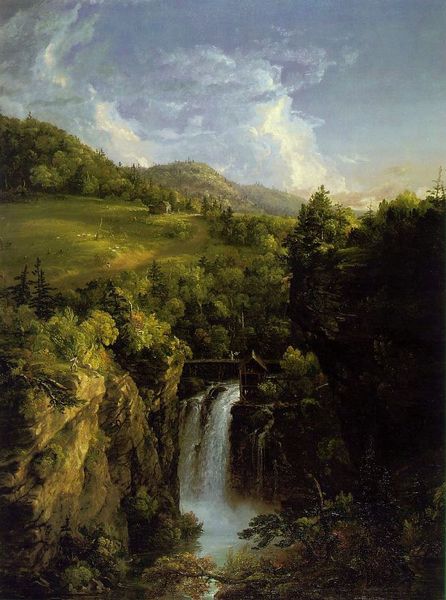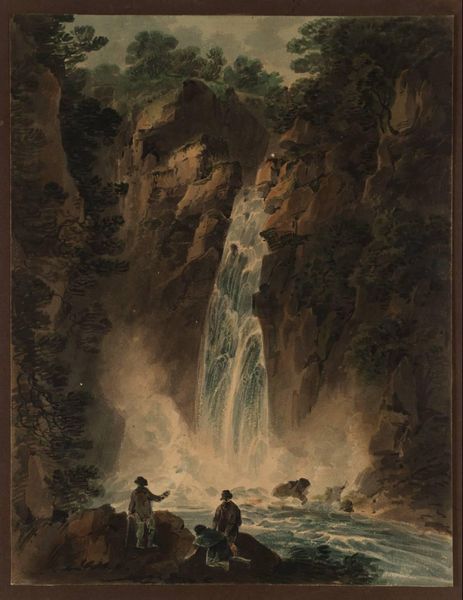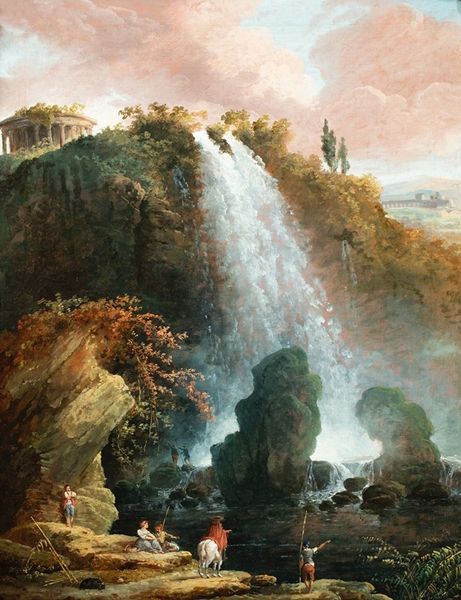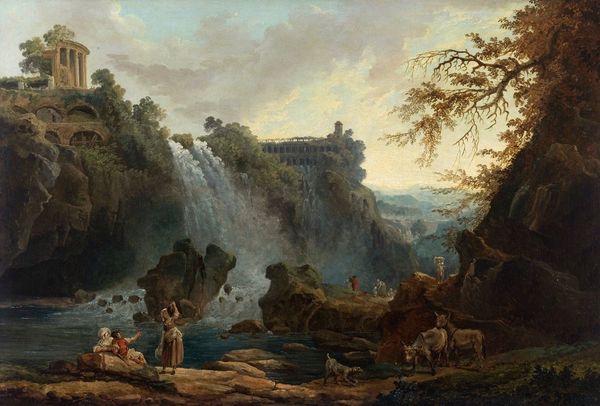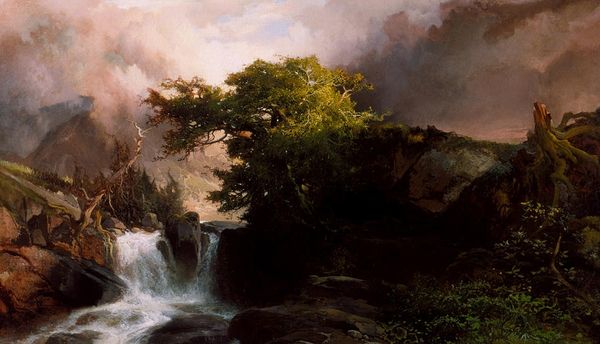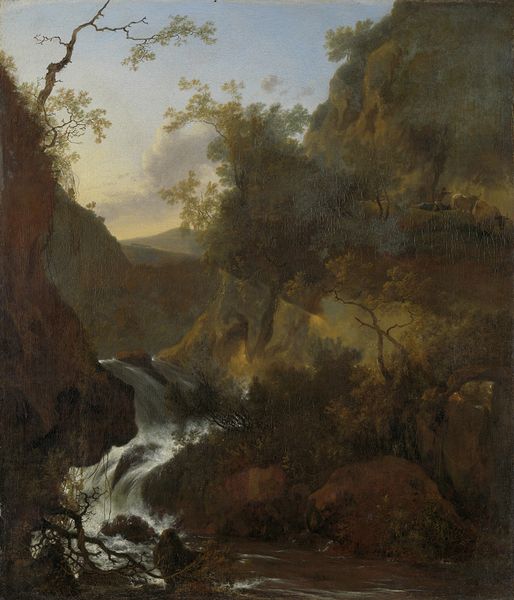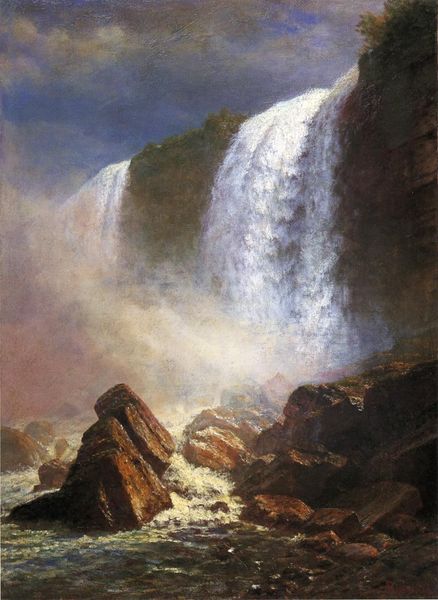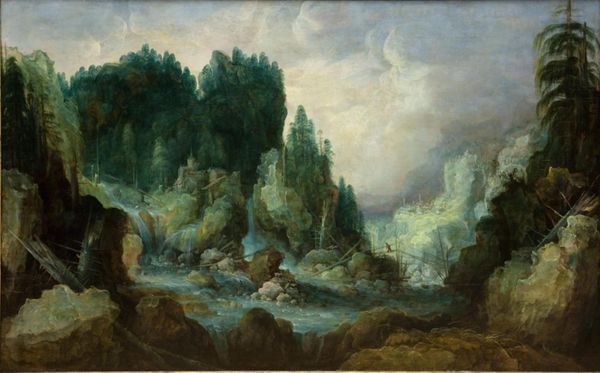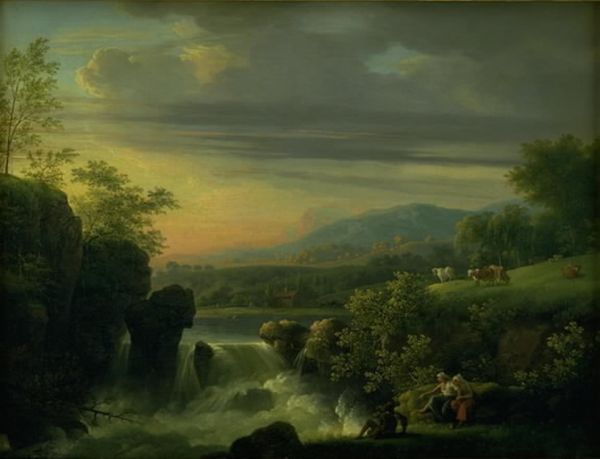
painting, oil-paint
#
narrative-art
#
painting
#
oil-paint
#
landscape
#
figuration
#
oil painting
#
rococo
Copyright: Public Domain: Artvee
Curator: Before us hangs a beautiful painting entitled "La Cascade," by Hubert Robert. It appears to be rendered in oil paint. My first impression is how elegantly melancholic it feels, almost as if time itself is softening the edges of the scene. Editor: I’m immediately drawn to the layering here; look how Robert establishes the foreground through the positioning of the human figures and the strong color of their robes in contrast to the wispy application of paint on the rocks and rushing water. Curator: The human figures at the base of the falls draw me in. There's a sense of the pastoral, a timeless tableau of humanity dwarfed by nature's grandeur. I immediately think about ideas of the sublime. Is the human role here merely one of quiet contemplation in the face of immense power? Editor: Absolutely, and I see this pastoral setting not only as idyllic but as a very real locus of labor, from the quarrying of the rocks, through the mining of pigment, the making of the canvas and brushes. Consider the exploitation of labor power underpinning this supposedly peaceful scene. Curator: Yes, and consider the narratives these people could carry, positioned as they are within such a charged scene. How does this composition echo similar images throughout history? Do these people hold a key to reading the image within a larger framework of, say, gendered dynamics or historical power? Editor: Speaking of those charged areas, look how skillfully the water is rendered—you can practically feel its force and coolness. We’re talking about the labor needed for the upkeep of these parks in order to achieve this fabricated idyll and the manipulation involved in transforming labor into pure spectacle for aristocratic patrons. Curator: Precisely! The artifice on display here underscores so many related questions about patronage, access, and the social structures that enable this vision to take form. It invites us to contemplate what we're seeing, as well as what’s intentionally obscured. Editor: Looking at the composition now I am left thinking about what kinds of social formations allow artists to dedicate their time and energy towards making idealized natural scenes in the first place and about how material reality, in all of its varied guises, makes representation possible. Curator: It truly does open multiple avenues for investigation. I am moved by its subtle social implications, its position as a potential critical artifact. Editor: Yes, now my experience in viewing “La Cascade” has shifted too. Looking at the social conditions surrounding art and production enables us to re-assess our inherited modes of engaging with these images.
Comments
No comments
Be the first to comment and join the conversation on the ultimate creative platform.
